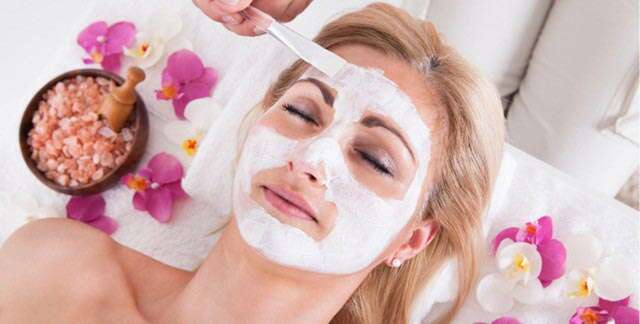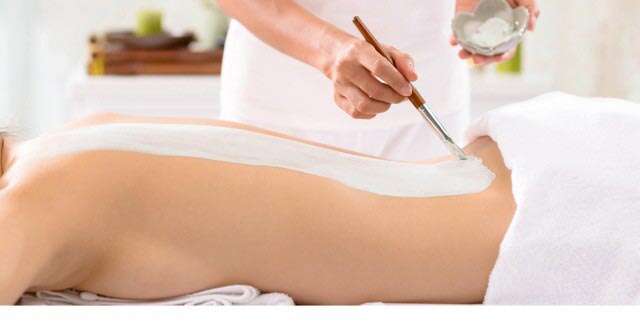More and more women are queuing up for chemical peels in their quest for smoother, unblemished skin. A curious Joyoti Mahanta speaks to dermatologists to know what the fuss is all about and to find out about the many options out there.

Photograph: Shutterstock
The all-knowing Egyptians were the first to explore the potential of chemical peels, though they had no inkling they were indulging in a beauty treatment that was way ahead of its time (3,500 years ahead, to be exact). All they knew was that bathing in milk resulted in stunningly glowing skin, and rubbing grapes on skin too had a similar magical effect. Back then, the world hadn’t quite zeroed in on the real do-gooders—lactic acid in milk and tartaric acid in grapes.
But, after thousands of years of incessant study, scientists have finally identified the various kinds of acids that exist in fruits, tree barks and bits of nature that, when applied, reveal the firmer, clearer, blemish-free, untanned skin hiding underneath.
How different is that from exfoliators, you may wonder. Well, very. Exfoliating scrubs slough off dead cells, while chemical peels go deeper and strip away the topmost layer of skin to reveal the fresh, new layer hidden underneath. The treatment has found many takers worldwide—even the enviably youthful Jennifer Aniston spends more than $1,000 (Rs.1 lakh approx.) on chemical peels every month.
So how does it actually work?
A peel is either a solution or a cream that is applied on the face and, depending on its concentration and the problem being addressed, left for varying lengths of time on a person’s skin. The average time varies between 2 to 30 minutes, to allow the ingredients to penetrate into the deeper layers.
Peels tackle pigmentation and produce skin with a smoother texture. Chemical peels use three main acid ingredients: alphahydroxy acid (AHA peel), trichloroacetic acid (TCA peel), and phenol. The amount of skin removed will depend on the type of chemical used and for how long it was left on the skin.
THE METHOD TO THE MAGIC
SUPERFICIAL PEELS
These are mostly AHA peels that remove the outer layer of the skin, known as the epidermal layer. These peels include the following:
Salicylic peel A derivative of winter birch tree extracts, this peel penetrates deep into the oil glands causing exfoliation and, therefore, is ideal for treating acne and oily skin. It can target many problems at once— blackheads, whiteheads, mild blemishes, underarm darkening and acne on the back.
Mandelic peel Made from bitter almonds, peaches and apricot extracts, these are commonly used to treat acne, but should be avoided if you have sensitive skin.
Lactic acid peel These are milk-based and also the mildest. This peel is usually administered to those with sensitive skin, making it especially suitable for pregnant women. It addresses basic problems like blackheads, whiteheads, mild acne blemishes, and, darker skin on the inner thigh. It involves a number of sessions, but it’s also the least damaging.
Glycolic acid peel These are mild sugarcane-based peels, and can be used to treat fine lines, wrinkles and sun damage. These peels come in various concentrations. Salons and parlours typically use only six per cent glycolic acid whereas skin clinics use 20, 35, 50 or up to 70 per cent glycolic acid peels.
Arginine peel Made from brown sugar, it is also a mild peel used for basic problems like sun tan
and dark circles. It is also quick to create a nice glow, so it’s perfect for those who want instant results just before heading for a party.
Black peel This is the new kid on the block. A vinegar-based (acetic acid) peel, a treatment with this involves a small acne cleanup procedure, after which the peel is immediately applied to kill the acne-causing bacteria.
Green peel Also known as pyruvic acid peel, it is derived from apple, honey and fermented fruits, and is ideal to tackle pigmentation and unevenly textured skin.
Ferulic acid peel Obtained from tomatoes and sweet corn, it is an anti-ageing peel that works on
collagen and elastin fibres. This peel tightens the existing collagen and stimulates formation of newer collagen, which degenerates as we age.
Kojic peel A Japanese mushroom derivative chemical, they are used on areas like the arms, back and legs to combat pigmentation.

Photograph: Shutterstock
MEDIUM PEELS
These are trichloroacetic acids (TCA) peels that remove both the epidermal layers and the underlying dermal layers. They include the following:
Trichloroacetic acid (TCA) is a stronger acid than glycolic. It penetrates deeper into the skin and is usually used for medium depth or deep peels, although it can be used in lower concentration in combination with other acids to form a milder peel. It can be used to treat skin tightening, fine lines, wrinkles, acne scars, large pores and hyperpigmentation. TCA come in strengths between 10 to 30 per cent. This peel is safer on fairer skin. The darker the skin, the lesser the concentration of acid used, as such skin types have a lot of melanin (pigment). And, if you try to disrupt the melanin, you only make the skin more vulnerable to sun burn, resulting in darker, scarred skin. A TCA peel is also recommended if you have dark patches or pigmentation on your back, a condition that dermatologists refer to as amyloidosis. Amyloidosis causes extremely dotted, dark patches on the arms and back. It usually happens if you scrub your body too often, or even if you have thyroid or diabetes.
The Obagi or Blue peel uses TCA as the active ingredient mixed with the patented Blue Base from Obagi. The Blue peel significantly improves skin tightness and reduces fine lines, wrinkles, acne scars, large pores and hyperpigmentation. Tretinoin peel Commonly known as the yellow peel, this is a vitamin A derivative peel that works on the marks left behind by serious injuries. It also addresses dark spots on the face, acne scars, and sun allergy that causes dark patches. Tretinoin peels are also used on the rear to tackle pimples, scars and stretch marks. TCA and tretinoin peels are also used to tackle other skin annoyances like dark knuckles, toes, elbows and knees.
DEEP PEELS
Phenol peel It contains carbolic acid, a strong peeling agent that makes it a very deep peel. Consequently, it is best used to treat deep lines, wrinkles, open pores, scarring and severe sun damage. Phenol peels are very effective against icestik scars, which are small yet deep. As this peel is extremely strong, your face looks burnt after the procedure. So, it is strictly reserved for those with fairer skin.
Cosmelan peel It is a deeper chemical peel, used to tackle severe, deep and stubborn pigmentation.

Photograph: Shutterstock
PREP TO PEEL
Your skin needs to pass a little test before being eligible for a chemical peel. The skin surface has to be even. If there is any injury, cut, wound, infection, bruise or herpes, a peel will only aggravate the condition. Also, the kind of peels recommended depends on the season. In winters, one needs to be very careful while administering peels because the skin is very dry. When the skin is dry, the upper protective layer gets disrupted. So, mild peels are performed. After using three different types of cleansers, the peel is applied, left on the skin for the required time, and then neutralised with water or a neutralising solution.
AFTERCARE
After you are done with the procedure, rub your face gently with ice to calm the ensuing irritation and redness. Irrespective of the type of peel, wear a sunscreen even when it’s cloudy as your skin will be sensitive to ultraviolet light. You can’t hit the beach or indulge your adventurous side by going trekking as the upper layer of the skin would have come off and your skin will be super sensitive. Avoid laser, Botox, waxing, bleaching and taking steam for at least two weeks—these might lead to scarring, which can then take over eight months to clear up. Remember, all peels penetrate into the deeper layers of the skin and cause microscopic changes within. So, if you don’t take protection, the inner layers will get damaged and cause pigmentation.
With inputs from Dr Jaishree Sharad, medical director and cosmetic dermatologist, Skinfiniti Aesthetic Skin & Laser Clinic, Mumbai, and Dr Indu Ballani, dermatologist, DL Kapur Super Speciality Memorial Hospital, Pusa Road, Delhi.